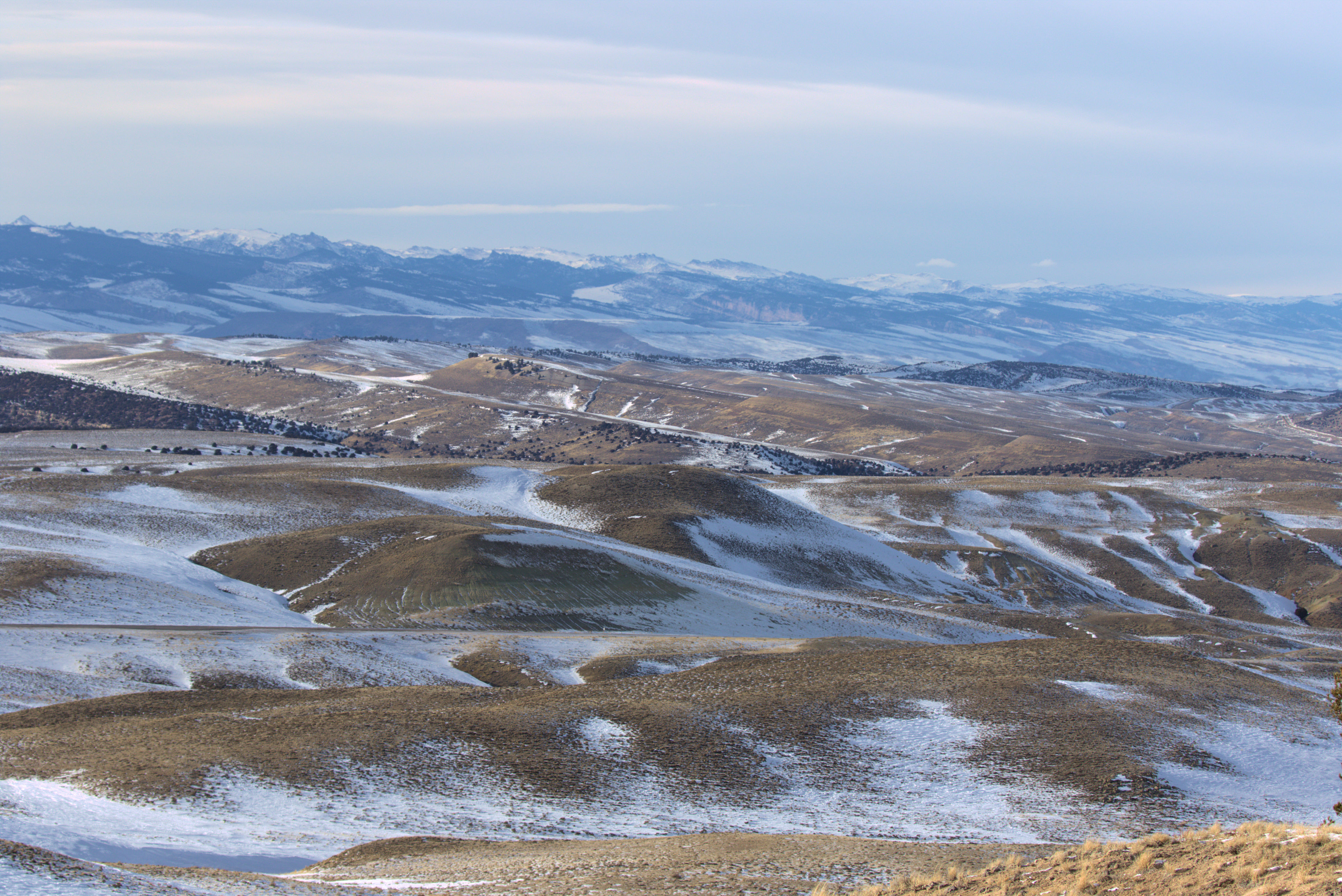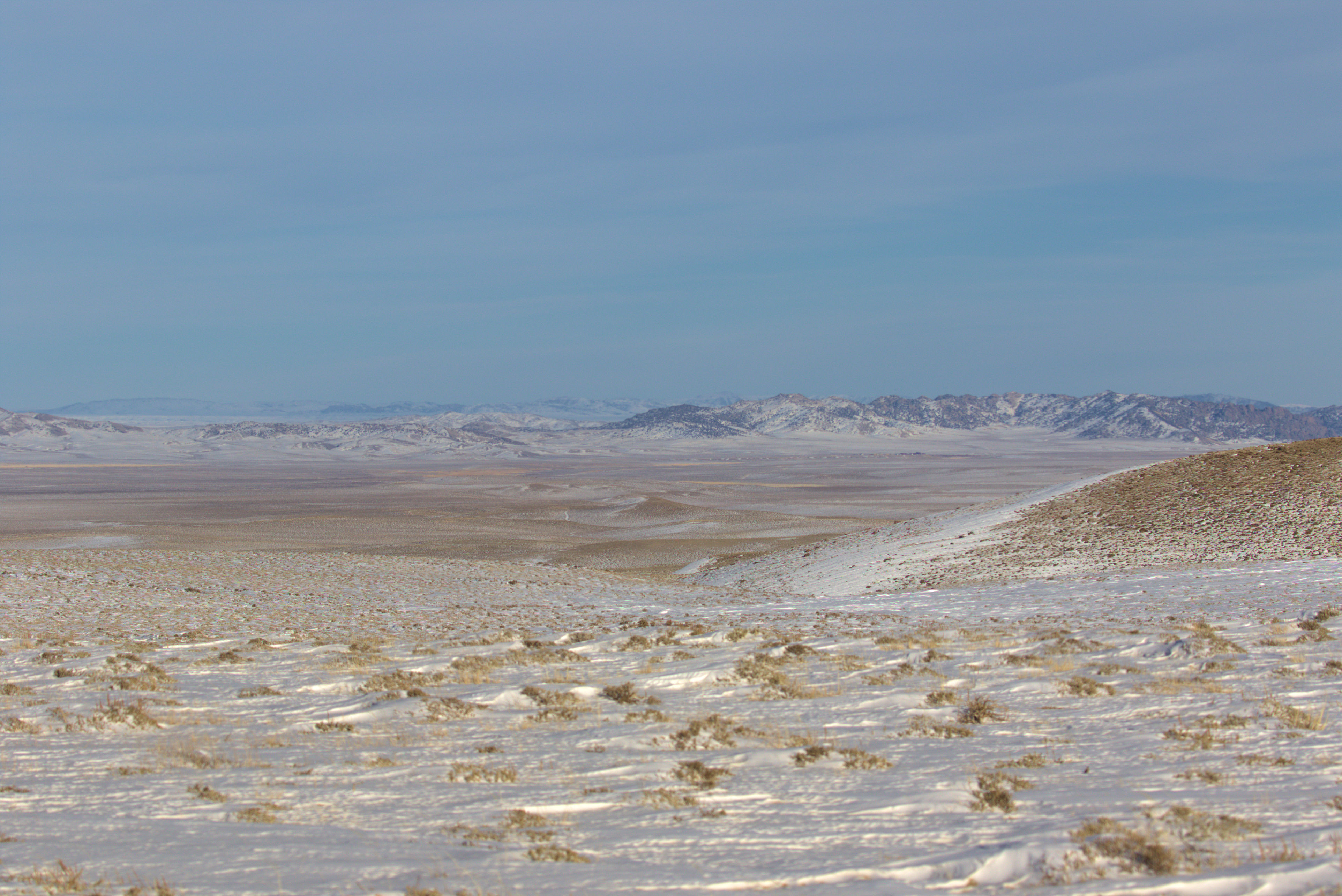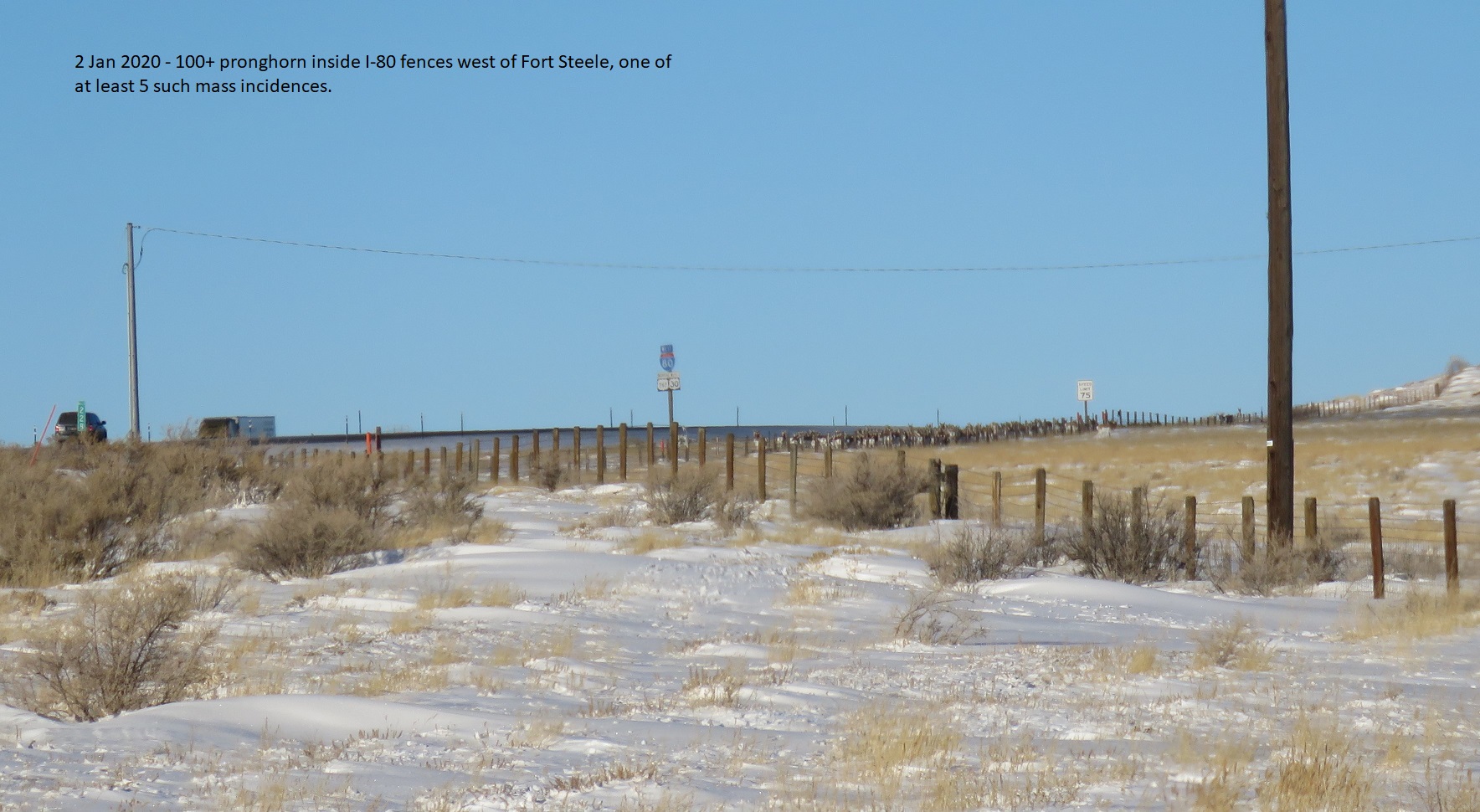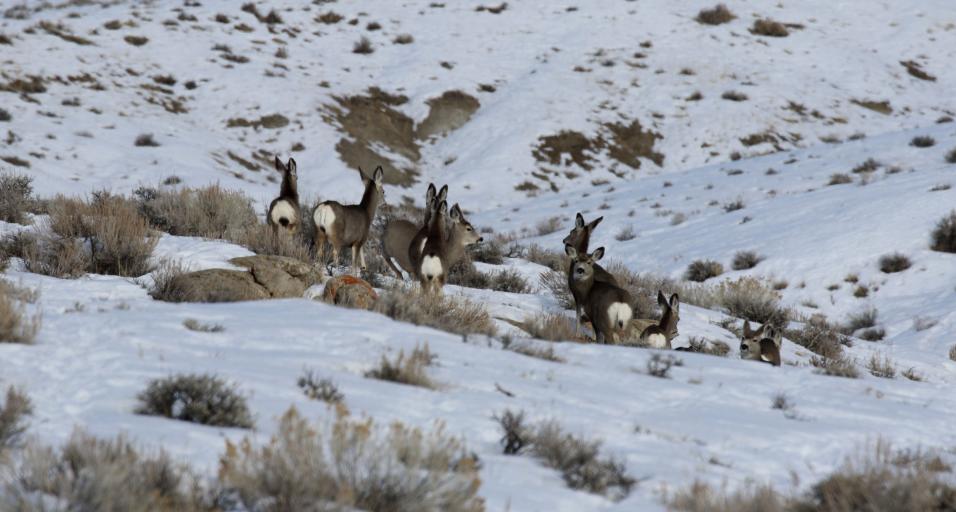Winter conditions for wildlife
Winter conditions in the Lander Region, to date, are variable. Perhaps conditions are best characterized throughout the region as “normal to harsh and severe” with regard to snow depths, temperature, wind, and winter range availability.
Low elevation winter ranges around Dubois have had a higher percentage of snow cover than normal since November. There is still bare ground and feed available but the existing snow cover has crusted and is making foraging and movement for big game in the area more difficult. Snowtel data from the area indicates snow water equivalent at monitoring sites is generally above 120% of median values, again indicating dense, crusted snow cover.
The Riverton and Lander areas have experienced more harsh conditions with persistent crusted snow cover and cold temperatures since at least Thanksgiving (-17oF in late October). Winter ranges outside of the Riverton/Lander valleys have snow and what there is has crusted over making movements and foraging more difficult; though in the past two weeks winter habitats on the Lander front of the Wind River mountains and those in the Twin Creek and Beaver Creek areas have opened up considerably. A high percentage of forage and browse is snow-covered on antelope and deer winter range east of Riverton. Conditions moderate some with less snow cover towards Canyon Creek and the South Fork Powder River.
Temperatures in Lander have been fairly steady since December 1, with minimum temperatures being above “normal”, but the maximum temperatures are below “normal”. Sunny days have been just warm enough to begin melting snow in the foothills and Lander valley, but unfortunately resulting in a very crusty layer on most exposures. Snow on south-facing slopes has cleared in most areas with wind and sun, but vegetation there is often less desirable as winter forage for big game species. Areas closer to Red Canyon and Beaver Rim are more open as winds have swept the snow away from many slopes. Although snow depths in the Government Draw area are similar to those around Lander, the snow is less crusty with a sugar-like consistency that pronghorn and mule deer are better able to move through to access sagebrush and other shrubs where present. At right: Beaver Rim towards Lander 1/16/20
crusty layer on most exposures. Snow on south-facing slopes has cleared in most areas with wind and sun, but vegetation there is often less desirable as winter forage for big game species. Areas closer to Red Canyon and Beaver Rim are more open as winds have swept the snow away from many slopes. Although snow depths in the Government Draw area are similar to those around Lander, the snow is less crusty with a sugar-like consistency that pronghorn and mule deer are better able to move through to access sagebrush and other shrubs where present. At right: Beaver Rim towards Lander 1/16/20
The Jeffrey City and Sweetwater Rocks to Beaver Rim (shown above and below) are similar to last year and are quite open with good access to forage. Also similar to last year the country south of Green/Crooks mountains is “snowed up” and experiencing severe harsh winter conditions (extreme cold and strong winds). 
Several thousand pronghorn were reported “packed up” against I-80 on the north side of the interstate west of Rawlins in the Red Desert herd unit by a local rancher. Between 300-500 pronghorn have  repeatedly gotten inside the I-80 right-of-way fences west of Fort Steele while moving westward from Walcott towards Sinclair. Several dozen have died in wildlife/vehicle collisions on the interstate. More than a dozen have been documented lost to drowning while attempting to cross the North Platte River prior to ice-up. Deep snows have pushed several hundred elk north to the UP railroad and I-80 on the Red Rim/Daley Wildlife Habitat Management Area, a movement not seen since the 2011-12 winter. While strong winds have exposed the tops of browse on many winter ranges, most are still covered with crusted snow, again making movements and foraging difficult. Last year, similar conditions were prevalent starting in February and March compared to initiating in November and December this winter. Given the early onset and continued presence of severe, harsh conditions, increased mortality of fawns and older-age adults is expected for deer and pronghorn. Picture shows pronhorn stacked up against the highway fence.
repeatedly gotten inside the I-80 right-of-way fences west of Fort Steele while moving westward from Walcott towards Sinclair. Several dozen have died in wildlife/vehicle collisions on the interstate. More than a dozen have been documented lost to drowning while attempting to cross the North Platte River prior to ice-up. Deep snows have pushed several hundred elk north to the UP railroad and I-80 on the Red Rim/Daley Wildlife Habitat Management Area, a movement not seen since the 2011-12 winter. While strong winds have exposed the tops of browse on many winter ranges, most are still covered with crusted snow, again making movements and foraging difficult. Last year, similar conditions were prevalent starting in February and March compared to initiating in November and December this winter. Given the early onset and continued presence of severe, harsh conditions, increased mortality of fawns and older-age adults is expected for deer and pronghorn. Picture shows pronhorn stacked up against the highway fence.
The Rawlins area is also experiencing harsh winter conditions with persistent snow cover, harsh temperatures, and strong winds. Pronghorn appear most affected as they are moving more this winter than in the past several winters. Several hundred pronghorn have moved across highway 287 north of Rawlins between the Red Desert and South Ferris herd units.
The Rawlins area is also experiencing harsh winter conditions with persistent snow cover, harsh temperatures, and strong winds. Pronghorn appear most affected as they are moving more this winter than in the past several winters. Several hundred pronghorn have moved across highway 287 north of Rawlins between the Red Desert and South Ferris herd units.
More pictures below depicting harsh conditions:
307-332-2688



